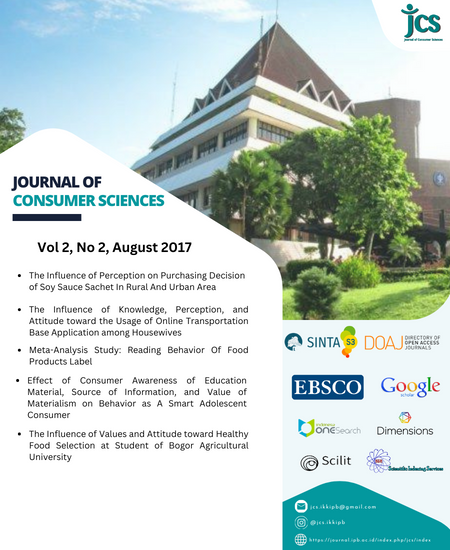Abstract
Labels are an integral part of a product. Observing the labels on the packaging, especially food products is considered very important to do. However, the label of food packaging products receives less attention from consumers. Therefore, the public is required to be more ingenious in observing the label of food packaging products to avoid food security problems which have adverse health effects. The purpose of this study was to map the results of research on label reading behavior. The design of this study was a literature study of research results that can be accessed via the internet. The results showed that the behavior of reading food product labels was done before buying the product (Aulawi 2005; Susanto 2008; Kumalasari and Sjafei 2012). From the frequency of reading nutrition labels, it could be found out that 42.5 percent of consumers sometimes read and 30.2 percent often read food packaging labels (Andrias 2016). Of the 52 studies, 17 studies have shown that women often read more and notice label attributes on food product packaging. The most commonly read consumer label (Figure 3) was the kosher logo and nutritional value. Food products that are usually labeled are packaged foods. Nutrition and health claims are considered as a means of education for consumers - 14 percent to know new information and 86 percent of consumers decided to read the labels because of the outside factors, such as advertising, internet, or at school.
Authors
Authors who publish with this journal agree to the following terms:
- Authors retain copyright and grant the journal right of first publication with the work simultaneously licensed under a

This work is licensed under a Creative Commons Attribution 4.0 International License. that allows others to share the work with an acknowledgement of the work's authorship and initial publication in this journal. - Authors are able to enter into separate, additional contractual arrangements for the non-exclusive distribution of the journal's published version of the work (e.g., post it to an institutional repository or publish it in a book), with an acknowledgement of its initial publication in this journal.
- Authors are permitted and encouraged to post their work online (e.g., in institutional repositories or on their website) prior to and during the submission process, as it can lead to productive exchanges, as well as earlier and greater citation of published work (See The Effect of Open Access).







